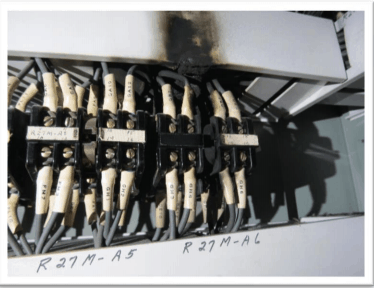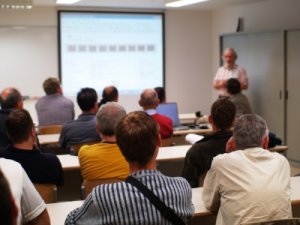Manual Emergency Notification Results in Response Delay

In case of emergency, go with established procedures.

What happened?
A decision during an emergency was made to manually notify the Central Facilities Area Fire Department. The reason for “manually”? The relay had ceased emitting smoke after it was de-energized and to avoid distracting staff attempting to perform necessary immediate actions.
It is important to always use the alarm pull box to allow for a timelier response from the fire department and to alert other complex personnel to an event in progress.
The details
On February 23, 2019, smoke was detected by the Advanced Test Reactor (ATR) Reactor Control Room (RCR) staff. Upon investigation, it was discovered that a relay in Relay Cabinet RC-5 was emitting the smoke. RCR staff opened RC-5 and discharged a “Clean Guard” fire extinguisher in the area of the smoking relay and then de-energized the relay. A manual SCRAM (also known as AZ-5, an emergency shutdown of a nuclear reactor) and reverse of the reactor were initiated.
The Central Facilities Area (CFA) Fire Department was notified by telephone, rather than by activating a pull box. The decision to manually notify the Fire Department was twofold:
1. When a fire alarm is pulled or activated, the alarm system emits a large amount of noise, which is distracting to the RCR staff attempting to perform immediate actions for a reactor SCRAM.
2. The relay had ceased emitting smoke after it was de-energized.
What issues were encountered?
• Manually performing a phone notification to the INL Fire Alarm Center took an inordinate amount of time (~5 minutes). This effectively removed a member off the watch team, away from control room activities. This also delayed the fire department response to the scene.
Note: ATR Complex personnel were not alerted to the fire, or the location, via the Automated Voice Annunciator System (AVAS), due to the manual notification decision.
Lessons learned
- Using the alarm pull box allows for a more timely response from the fire department and alerts other complex personnel to an event in progress.
- When using an alarm pull box, the audible portion of the fire alarm system can be acknowledged and silenced at the local fire alarm panel, once the initial notification sequence is complete. Doing so would have eliminated the noise distraction to the operators as well as prevented the loss of productivity experienced by the RCR Operator making the manual notification.
This Lesson Learned is from the Idaho National Laboratory Operating Experience Program, REFERENCES CO 2019-0345; INR 2019-0027. Shared by U.S. Department of Energy. OPEXSHARE (opexshare.doe.gov) supports the implementation of the U.S. Department Energy’s Corporate Operating Experience Program. This information and collaboration resource supports the DOE-wide program for the management of operating experience complex-wide to prevent adverse operating incidents and facilitate the sharing of good work practices among DOE sites.

The TapRooT® System trains you to solve problems
Circumstances can crop up in any occupation at any time if proper and safe sequence and procedures are not planned and followed. We encourage you to learn and use the TapRooT® System to solve problems.
TapRooT® has a team of investigators and instructors with years of extensive training ready to offer assistance worldwide. We also offer ongoing support to our clients through free newsletters and root cause tip videos, the root cause analysis blog, and our annual Global TapRooT® Summit.
Register for a TapRooT® Root Cause Analysis Training Course
Register for one of our courses. We offer a basic 2-Day course and an advanced 5-Day course. Contact us or call 865.539.2139 about having a course at your site or for further root cause analysis training opportunities. We’re here to find solutions for you.



